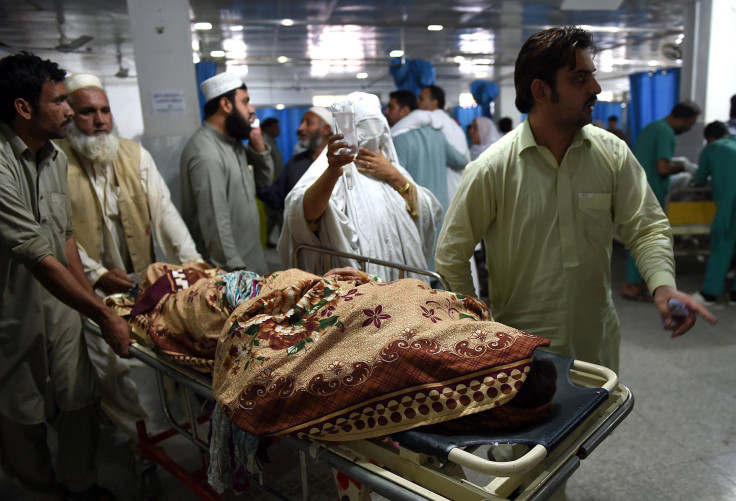Afghanistan 7.5 Magnitude Earthquake Hits Pakistan, India: Death Toll Rises

UPDATE 10:19 a.m. EDT -- Following an earthquake that registered 7.7 on the Richter scale, the death toll in Afghanistan and Pakistan has continued to climb. The latest data put the total number of fatalities at upwards of 180 people, the Guardian reported. At least 145 of those fatalities were in Pakistan, local officials told the Associated Press.
Some 600 people were wounded in the massive earthquake, many of them children. At least 42 schoolgirls in Afghanistan were rushed to the hospital after their classroom crumbled during the quake, killing at least 12.
UPDATE: 9:21 a.m. EDT -- The death toll following the earthquake that hit Afghanistan has risen to at least 80 people, according to the Associated Press. Other estimates from people on the ground, including a local journalist for National Geographic magazine, put the death toll closer to 105.
One Afghan security official described the earthquake as "the strongest one felt in recent decades," in a post to Twitter. "There are reports of heavy casualties caused by the earthquake, but exact numbers are yet to be released by government authorities," the official said in his tweet, as reported by AP.
Death toll in #Pakistan #Earthquake raises over 100. Multiple sources have confirmed at least 105 deaths.
— Faizan Lakhani (@faizanlakhani) October 26, 2015Original Story:
A massive 7.5-magnitude earthquake hit Afghanistan Monday, with its effects felt in parts of Pakistan and India as well. The earthquake's epicenter hit Jarm, Afghanistan, a city about 150 miles from the capital Kabul.
More than 52 people were killed in Afghanistan and Pakistan, according to local news outlet Dawn, with Al Jazeera reporting casualty tolls of higher than 38 people. Casualties in Pakistan accounted for 29 of the fatalities, Reuters reported.
Powerful #earthquake shakes northern #Afghanistan and #Pakistan. See video from Kabul here: https://t.co/H0IWEScSmk #AfghanistanEarthquake
— YouTube Newswire (@ytnewswire) October 26, 2015At least 23 people died and more than 140 injured in massive earthquake that shook S Asia https://t.co/gefAn3RkIn pic.twitter.com/dHcwXYIkU8
— AJE News (@AJENews) October 26, 2015“With a magnitude of 7.5 on the Richter scale, it had the potential to be very damaging, but fortunately it occurred at a depth of more than 200 km (as they usually are in this area),” geology expert David Rothery told the Guardian. “[So] the shaking of the ground surface was less than it would have been for a shallower earthquake of the same magnitude,” he said. Rothery said despite this factor the death toll could be quite high, as many of the homes in the region are poorly constructed and liable to collapse and kill or injure people.
JUST IN: #earthquake image from #Kashmir (via @ahmermkhan) pic.twitter.com/tZspqxaiPg
— SkymetWeather (@SkymetWeather) October 26, 2015JUST IN: Image from #Hunza where an entire glacier has come falling down. (via @FarhanKVirk) #earthquake pic.twitter.com/pgK3x9oDtu
— SkymetWeather (@SkymetWeather) October 26, 2015At least 12 schoolgirls were killed in a stampede in Afghanistan as they tried to escape from their shaking school building. The surviving girls are being treated at a nearby hospital.
“I could see homes, buildings shaking. We are terrified and I am unable to reach my family living in Malakand district. All phone lines are shut," one Pakistan resident told Al Jazeera.
After the initial quake, aftershocks measuring 4.7 and 4.8 on the Richter scale were felt in Afghanistan, according to the U.S. Geological Survey.
A little over a decade ago, in October 2005, an earthquake in the same region killed more than 79,000 people and left 3.5 million homeless, according to the Associated Press. In the past 15 years, about 120,000 people have died from earthquakes in the region.
Power full land sliding at Daniyore Gilgit old Bridge pic.twitter.com/3UqaRJORWH
— kumail hassan (@KummailHassan) October 26, 2015© Copyright IBTimes 2024. All rights reserved.












